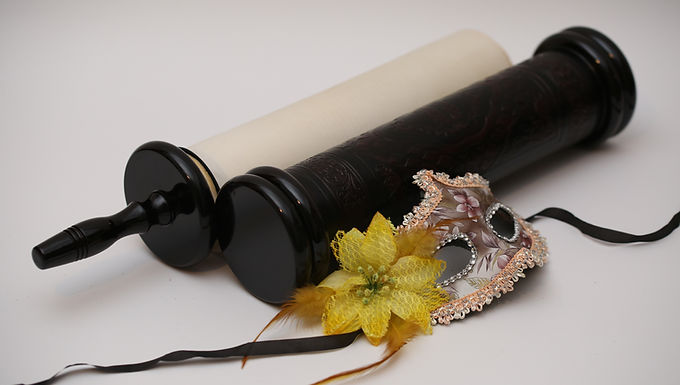CHEERING ESTHER
Reflections on the Jewish Festival of Purim
Learning about another’s religion is always enlightening. However, when it comes to Christians learning about Judaism, the blessings are magnified indeed, given the deep links between the two traditions. This certainly rings true in my own faith experience as a Catholic. Since I began paying attention to the Jewish liturgical calendar I have been led to parts of my Bible which previously escaped my attention.
Take, for example, the celebration of the Jewish festival of Purim. Purim celebrates an event of deliverance-from-evil told in the Book of Esther. It is the melodramatic tale of how the beautiful Queen Esther, herself a Jew living in an ancient Persian empire, saved her people from a massacre at the hands of a villain named Haman.
Purim today has the character of a fun-filled victory celebration. The rejoicing of Jewish communities has a carnival atmosphere: costumes, masquerades, plays, parodies and plenty of wine! Food baskets given as gifts for friends and for the poor are also part of Purim activities. However, the primary commandment related to Purim is to hear the reading of the Scroll of Esther (Megillat Esther). The reading calls for active participation. Engaging with the story, playfully (yet respectfully), it is customary to boo, hiss and make loud noises at the mention of Haman’s name.
Of course, the Book of Esther is integral to my own Catholic faith tradition; I find it in my Bible* and hear it proclaimed as part of the lectionary. It has been preserved as a divinely inspired sacred text, the word of God. And yet, in my experience, this lively biblical story does not usually attract much attention in Catholic parishes or classrooms. In a spirit of learning from the Jewish people, Purim is a fitting time to discover, or rediscover, this part of our Scriptures (and to cheer the heroine Queen Esther!) as part of our own Catholic biblical formation.
Along with the joyful character of Purim, a sombre note also sounds. In the Jewish calendar the Sabbath prior to Purim is called Shabbat Zachor, ‘Sabbath of Remembrance.’ On this day an added reading from Exodus tells of Amalek, traditionally identified as a biblical character of cruelty and an ancestor of Haman. Thus, while Purim brings to mind a moment of salvation for the Jewish people, the ever-present reality of human suffering and the commitment to resist evil are also remembered on Shabbat Zachor.
On the day (or a few days) prior to Purim observant Jews observe the Fast of Esther recalling Queen Esther’s personal fast and that of the Jewish community prior to Esther’s intervention on behalf of her people (Esther 4:16). Purim closes with friends and family gathering for a special afternoon meal.
If you have Jewish friends, neighbours or colleagues, ask them to teach you more about Purim. Invite some conversation based on your reading of the Book of Esther. Allow this ancient story, packed with timeless meaning, to enliven your biblical and interfaith sensibilities.
* Note: Catholic Bibles include certain textual differences and additions compared to the Jewish Bible, relating to use of the Septuagint, the early Greek translation of the Hebrew Scriptures.
© Teresa Pirola, 2011. lightoftorah.net.
Reproduction for non-commercial purposes permitted with acknowledgement of website.
